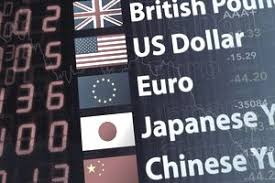Foreign-exchange trading is finally turning digital

THE FOREIGN-EXCHANGE (FX) market is as opaque and old-fashioned as it is enormous. Most of its $ 5trn of daily trading happens “over-the-counter” (OTC), in deals negotiated between banks and private customers, rather than on exchanges. Many orders are still placed by phone. Gauging the market’s size and structure usually means relying on outdated surveys. The most comprehensive review, by the Bank for International Settlements, is conducted only once every three years.
Yet modernity is arriving—in fits and starts. Last month it emerged that Deutsche Börse, Europe’s third-largest stock exchange, was close to buying FX all, an electronic FX-trading platform, for a reported $ 3.5bn. If it happens the deal could end up being one of the largest in Deutsche Börse’s history. It hints at a shake-up in a sector that has long been deemed antediluvian.
The FX market serves not only investors, but corporations and governments seeking to protect trade or bonds against currency swings. FX contracts can be “spot” (for immediate delivery), “forward” (for delivery at a later date) or “swap” (when currency is exchanged back at maturity). Buyers go through dealers (mostly banks), which source liquidity. Specific needs, such as matching cash-flow dates, are more easily met using OTC trades, which can be tailored, than over exchanges.
That is not about to change. Rather, Deutsche Börse is betting that buyers will abandon “voice” orders, placed via single banks, in favour of digital platforms that pool prices from multiple dealers. The trend is already boosting e-trading in spot FX. Volumes have doubled over the last decade—FX all’s share of this electronic activity has reached 40%.
Longer-dated FX-derivatives contracts, such as forwards, have withstood the shift: the longer the maturities, the fewer the transactions, and the harder it is to connect enough users simultaneously in order to get e-trading to work. Yet here too, change is afoot. Tighter regulation is increasing costs, which asset managers are seeking to offset elsewhere. European regulators also require them to be able to demonstrate that they are trading at the best possible price. By connecting buyers with multiple dealers in an instant, e-trading achieves both, as well as leaving a clear audit trail. And long-dated contracts are becoming more common, which boosts liquidity.
As FX goes digital, the ranks of dealers will be thinned. At the spot end, the trend has opened the door to “principal” trading firms, which buy and sell on their own account using algorithms. It has also fuelled competition among banks, slashing margins and pushing many towards the exit. That is leaving the bulk of deals to a handful of big banks, often in partnership with principal trading firms. Maturities beyond a week have been little affected so far, but consolidation is “creeping up the curve”, says Joanna Nader of RBC Capital Markets.
The rise of centralised clearing is also helping to level the playing field. Only 3% of FX derivatives trades currently go through clearing houses, which absorb the risk one party defaults. Clearing is set to become more attractive for traders, in part because regulators are requiring higher collateral to be held on some uncleared FX deals. E-trading already makes it easier for users to find nonbank dealers. By removing counterparty risk, clearing will weaken the advantage that banks with big balance-sheets enjoy over the newer trading firms.
As trading costs fall, FX buyers will cheer. So will Deutsche Börse, which owns Eurex, a clearing house that will soon launch FX products.
